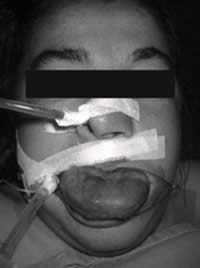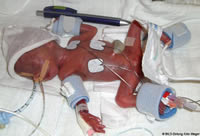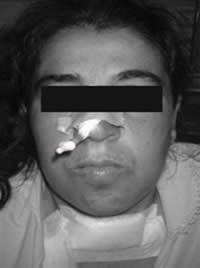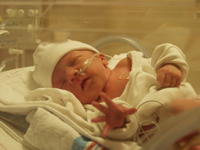- Citas Centro Médico de Caracas: Lunes, Miercoles y Viernes. Pulse el botón Agende una Cita
- Sistema de citas en linea exclusivo para Centro Medico de Caracas en San Bernardino
- Citas CMDLT: Jueves. llamar al 0212-9496243 y 9496245
- Las Emergencias son atendidas en CMDLT previa coordinacion personal al 04142708338
- Proveedor Seguros Mercantil y Sudeban

Eclampsia (from the Greek eklampsis) means sudden flash (lightning) and implies the most severe degree of hypertensive conditions of pregnancy and represents the most feared complication of preeclampsia, manifested as severe tonic-clonic seizures of sudden and unexpected onset (hence its resemblance to a lightning) in a patient suffering from preeclampsia. It is a very scary picture for those who observe it and usually leads to an emergency cesarean section regardless of the maturity of the baby.
Who are at risk of Eclampsia?
The same risk conditions for preeclampsia
What are the manifestations of Eclampsia?
Convulsions in pregnant women in the presence of preeclampsia or its symptoms and signs such as: hypertension, loss of protein through the urine (proteinuria) and severe edema (swelling). Not all symptoms are always present and therefore the maximum: every seizure during pregnancy is an eclampsia until proven otherwise
Symptoms that precede Eclampsia
The following manifestations or premonitory symptoms, in the presence of preeclampsia, its manifestations or risk factors, suggest the possibility that the patient may convulse at any time:
- Headache (50-75%)
- Visual alterations: stars in the eyes, blurred vision, discomfort with light (19-32%)
- Pain in the pit of the stomach
- Mental and neurological disorders
How is the seizure?
A seizure is never a pleasant event, however, the ecliptic seizures in the pregnant woman for some reason are manifested as a grotesque spectacle. Fortunately I have only witnessed 2 cases. I do not really know if the seizure is more grotesque than the other convulsions outside pregnancy or that the psychological effect that the pregnant woman has on those who see her convulsing makes the witness suffer a lot watching that show that endangers the life of the mother and her son. The truth is that due to the changes of pregnancy there are more darn images
The woman’s face is abnormally swollen and when the seizures begin the eyes protrude outwards, the face turns red and involuntary contractions begin in the lips, mouth, eyelids. The bite of the tongue quickly generates a lingual hematoma that causes the tongue to swell, protrude and block the mouth.
The woman stops breathing and the contractions and movements of arms and legs typical of seizures, spasms, stiffness, relaxation begin; The patient can urinate or defecate. This lasts from a minute to a minute and a half.
At the end of the episode, the patient can be comatose and upon awakening she does not remember anything of what happened
What should be done?
In conditions outside the hospital and before untrained personnel, the only thing that can be done is to protect the patient’s breathing and take it immediately to a well-equipped emergency care center, which has the conditions to perform an emergency and gifted cesarean section. with intensive therapy of adults and neonatal intensive care.
Protection of the tongue and airway: the most used and available way is the placement of a man’s wallet in the patient’s mouth to prevent injury to the tongue, teeth and airway compromise.
How is eclampsia cured?
The only known way to cure Preeclampsia / Eclampsia is the termination of pregnancy.
In our setting, emergency cesarean section is very frequent within the first 24 hours of the start of the picture, once we have controlled the seizures and stabilized the mother and the fetus, if the pregnancy has reached the end or is near and childbirth is not imminent. If the conditions for vaginal delivery are given, birth through this route is allowed
If maternal-fetal complications arise, we usually perform an emergency cesarean regardless of fetal maturity.
If the baby is very immature (24-34 weeks) and the maternal conditions have stabilized we try to prolong the pregnancy to allow a better fetal survival. The observation is made hospitalized and under strict medical measures that include maternal control, continuous fetal monitoring and appropriate medication
What happens after delivery or cesarean section:
The patient is hospitalized and under strict control of their conditions. If the evolution is satisfactory and there have been no complications the patient withdraws in 2-7 days
Can it be repeated?
The risk of suffering from Preeclampsia / Eclampsia again is increased for future pregnancies. The risk, depending on the background, can vary from 12.5 to 50% (or higher depending on the origin)
Final recommendations:
Plan your pregnancy: initiate Preconceptional Care (this is the ideal pregnancy planning)
Start an early prenatal care if you are already pregnant.
If you suffer from a chronic disease control it properly with a qualified specialist before starting a pregnancy
A typical case
Primigravida of 35 years, pregnancy of 27 weeks, consultation for headache, visual disorders and high abdominal pain. Very high tension figures (165/113). The patient loses consciousness and immediately starts violent convulsions.
Diagnostic probabilities:
- Eclampsia
- Stroke
- Hypertensive encephalopathy
- Metabolic encephalopathy
- Epilepsy
- Decision: Eclampsia
Initial handling
- Cardiovascular and respiratory support.
- Prevent bodily injury and prevent airway obstruction.
- Do not try to stop the first seizure if you do not have vascular access.
- Avoid the recurrence of new episodes.
- Tension control to avoid CNS injury.
- Consider diagnosing and preventing associated complications.
- Consider interrupting the pregnancy by the most appropriate route.
Eclamptic patient minutes after the incident, note the large swelling of the face and tongue, which also shows bite injuries during seizures. This patient remains in Intensive Adult Therapy in an Institution with experience in the management of obstetric complications.

An emergency caesarean section was performed and a premature newborn was obtained who was admitted to intensive neonatal therapy.

Recovery period, weeks after the event. The patient requires tracheostomy and tube feeding, graduated from Intensive Therapy and continues in intermediate care as a delicate patient, she graduates in one or two weeks.

The baby evolved well. Stay in Therapy until you are able to require minimal care, feed by suction, gain weight and manage your body temperature.
